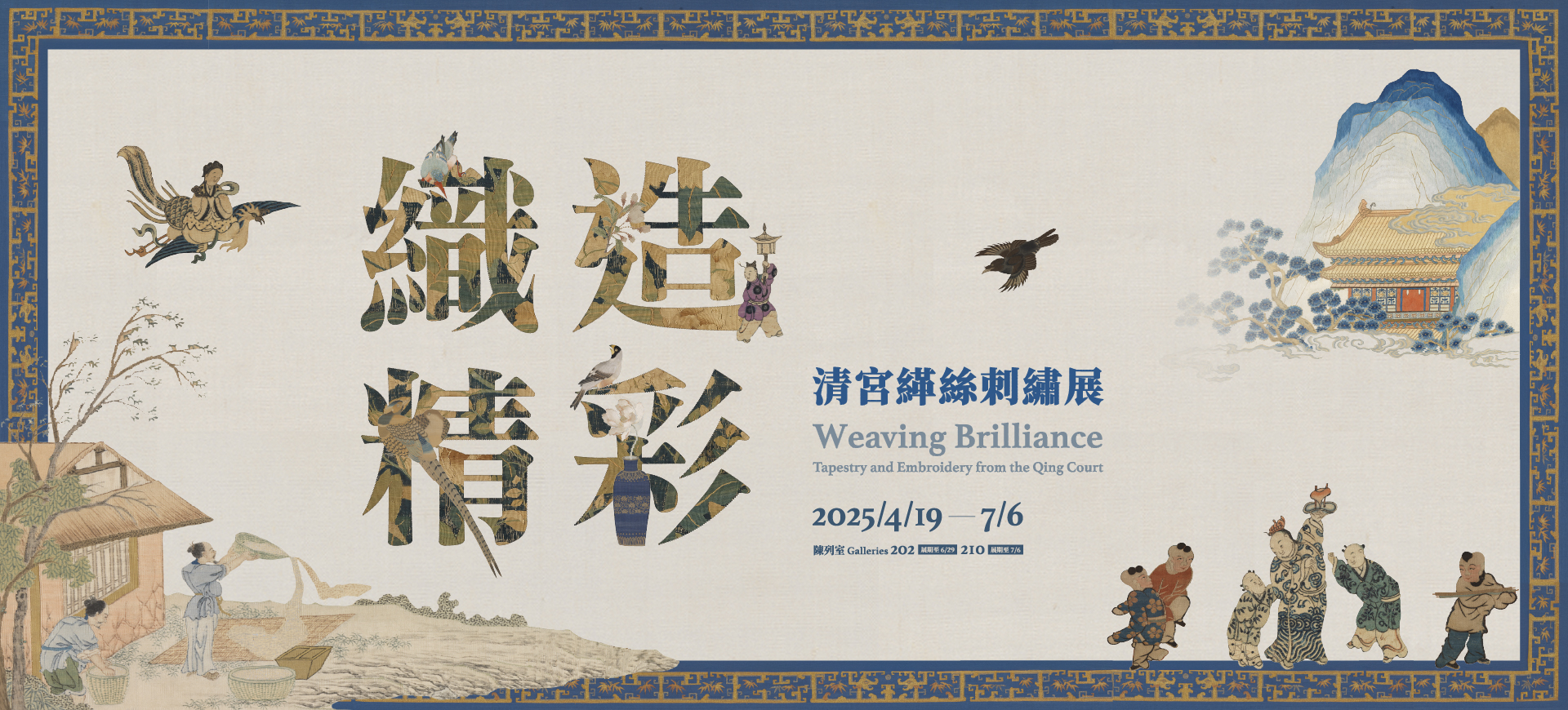Magnificent Works of Kesi and Embroidery Made for the Qing Court
-
Kesi Glorious Celebration in a Farming Village
Anonymous, Qing dynasty
Hanging scroll
Gu Si 000038From the reign of Emperor Kangxi, the Qing court placed great importance on agriculture and sericulture-themed paintings. Artists such as Jiao Bingzhen (act. 1689–1726), Leng Mei (ca. 1670–1742), and Chen Mei (ca. 1694–1745) all produced albums themed on agriculture and sericulture, consisting of 46 scenes—23 on ploughing and 23 on weaving—depicting every step from sowing seeds to harvesting crops and from raising silkworms to weaving fabrics. The Qing court produced a wide range of artworks inspired by agriculture and sericulture, and this kesi piece is one such example.
The lower right corner of the design features a scene of a villager pounding rice, derived from the 18th scene “Pounding with a Pestle and Mortar” in Farming Illustrations. Pestles and mortars are traditional rice-pounding devices used to process grains. In this hanging scroll, a rural family warming itself by a charcoal fire and an elderly man holding the hand of a child add a sense of rustic joy to the village life depicted.


